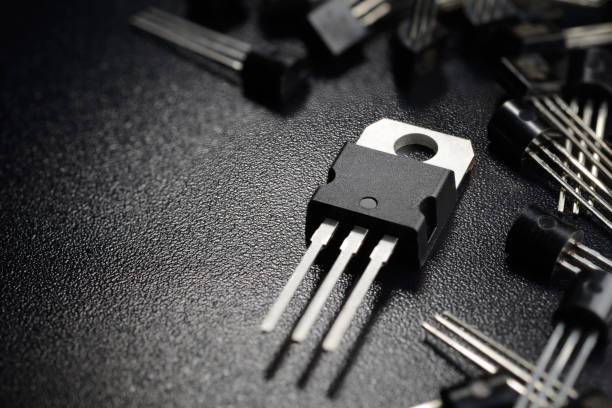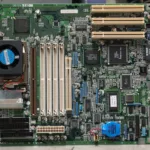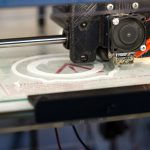
Introduction
Engineers and innovators are constantly seeking ways to enhance vehicle performance, efficiency, and safety in the ever-evolving automotive technology landscape. One breakthrough that has gained significant attention is the VOMDA1271, an advanced and latest automotive-grade MOSFET driver designed to revolutionise automotive power management systems. This article introduces the concept of the latest VOMDA1271 Automotive Photovoltaic MOSFET Driver, its applications, and the potential benefits it brings to the automotive world.
Understanding Photovoltaic MOSFET Drivers: The Significance
A photovoltaic MOSFET driver or photovoltaic gate driver is an electronic circuit that controls metal-oxide-semiconductor field-effect transistors (MOSFETs) using photovoltaic isolation. Photovoltaic isolation is achieved by utilising a light-emitting diode (LED) to optically couple the driver’s input and output sides–eliminating the need for a direct electrical connection. Photovoltaic MOSFET drivers ensure robust reliability and safety, protecting sensitive electronics from voltage spikes, noise, and other potential hazards. Their significance also lies in their ability to operate in wide temperature ranges and noise immunity in high-voltage and high-current environments.
Bringing Photovoltaic MOSFET Drivers to the Automotive World
Integrating Photovoltaic MOSFET Drivers into the automotive industry can significantly control various systems and components within modern vehicles. These drivers offer a range of benefits–contributing to better performance, efficiency, and safety. Some of the potential advantages include:
- Advanced Battery Management
Automotive Photovoltaic MOSFET Drivers are pivotal in advanced battery management systems. Electric and hybrid vehicles rely on sophisticated battery packs for power. These integrated drivers help optimise battery performance by enabling precise control over charging and discharging processes. Additionally, they also provide robust protection against overcurrent and overvoltage conditions, enhancing battery safety and longevity.
- Electric Power Steering
Electric power steering systems are becoming increasingly popular and common in modern vehicles due to their energy efficiency and precise control. Photovoltaic MOSFET drivers contribute to a smoother, more responsive, and enhanced driving experience by providing reliable isolation and control–regulating power delivery to the steering motor.
- LED Lighting Control
LED lighting, a staple in automotive design, offers energy-efficient and long-lasting illumination. Automotive photovoltaic MOSFET drivers can control the LEDs’ brightness and operation and ensure that control signals do not interfere with sensitive electronic components, enhancing overall system reliability.
- Electric Vehicle Charging
Efficient and safe charging systems have gained increasing demand due to the popularity of electric vehicles. Photovoltaic MOSFET drivers are essential in electric vehicle charging stations, providing the necessary isolation and control to ensure an efficient and safe charging process. Bespoke technology also facilitates faster charging times and improves user safety.
The VOMDA1271: A Vishay’s Advanced and Latest Automotive-Grade Photovoltaic MOSFET Driver
The VOMDA1271 is an automotive-grade photovoltaic MOSFET driver manufactured by Vishay. This compact and reliable device is designed specifically for automotive applications, where robust performance and reliability are paramount. The semiconductor is the fastest driver with 8.5V open circuit output voltage, making it an indispensable driver for EVs and hybrid EVs. The device is effectively used for vehicles’ battery management systems, wall chargers, and pre-charge circuitry. Furthermore, the Vishay’s space-saving driver is the best alternative to electromechanical relays, allowing designers to create custom solid-state relays in next-generation vehicles.
Uncovering the Special Features and Benefits of Vishay’s Automotive Photovoltaic MOSFET Driver
The Vishay automotive MOSFET driver comes equipped with unique features, providing unprecedented benefits, such as:
- Photovoltaic Technology: The VOMDA1271 incorporates cutting-edge photovoltaic technology, allowing it to harvest energy from the sun or other light sources. This energy-efficient feature reduces the reliance on the vehicle’s electrical system and prolongs battery life.
- Integrated Turn-Off Circuitry: One of the critical features of the VOMDA1271 is its turn-off circuitry, which is crucial in automotive systems where precise control of power switching is essential. This circuitry ensures efficient and controlled turn-off of MOSFETs, reducing voltage spikes and other undesirable effects that can be detrimental to sensitive automotive electronics.
- Compact Design: The VOMDA1271 boasts a compact form factor (SOP-4 footprint), making it easy to integrate into confined automotive electronics systems.
- Efficient Turn-On Time: The driver features a 0.05 msturn-on time, which is twice as fast as other traditional counterparts, making it a professional choice for automotive applications.
- Advanced Control: With precise and fastest MOSFET switching capabilities, this driver offers superior control over power management in multiple applications such as DC-DC converters, motor drives, LED lighting, etc.
- Infrared (IR) LED: For turning ON the M0SFET, the driver absorbs the light by incorporating an infrared LED (AIGaAs)–emitting light.
- Automotive-Grade Reliability: The VOMDA1271 is built to meet the automotive industry’s stringent requirements. It is AEC-Q102 qualified, ensuring exceptional performance and reliability in harsh automotive environments.
- High Efficiency: The MOSFET driver maximises power efficiency in automotive applications, reducing energy waste and generating heat. The ultimate high efficiency enhances vehicle performance, improves fuel economy in internal combustion engine vehicles, and extends range in electric vehicles.
- Wide Operating Voltage Range: The driver’s wide operating voltage range ensures compatibility with various vehicle power architectures, including 12V and 48V systems and electric and hybrid vehicles.
- Protection Features: The driver’s built-in protection mechanisms safeguard against over-temperature and over-current situations, ensuring vehicles’ safety systems.
- Cost-Effectiveness: The Vishay’s MOSFET driver is cost-effective and highly flexible.
Use Cases of Vishay’s Advanced and Latest Automotive-Grade Photovoltaic MOSFET Driver
The optically isolated MOSFET driver finds applications in a wide variety of equipment in automotive systems. Some of the use cases include:
- Electric and Hybrid Electric Vehicle Power Inverters: The VOMDA1271 enhances the efficiency and performance of bespoke vehicles’ powertrains.
- LED Headlights and Lighting Systems: The driver is extensively used to achieve precise control and energy savings in automotive lighting applications.
- DC-DC Converters: Optimise power conversion for various vehicle subsystems, including infotainment, sensors, etc.
- Motor Drives: Ensure the motors’ smooth and efficient operation in automotive systems.
- Battery Management: Enhance battery charging and management systems for electric and hybrid vehicles.
- Solar-Powered Accessories: Utilise the photovoltaic capabilities for auxiliary power sources, reducing the load on the primary electrical system.
Final Remarks
The automotive photovoltaic MOSFET driver is a groundbreaking technology with immense potential for the automotive industry. The VOMDA1271 from Vishay is a compact and reliable photovoltaic MOSFET driver with a turn-off circuit designed for automotive applications. The driver is integrated with advanced features reliability and has an energy-efficient design–transforming various management applications in today’s vehicles. In automobile technology, primarily electric and hybrid vehicles, such innovations are likely to play a pivotal role in shaping vehicles and driving the future of automotive innovation.





















